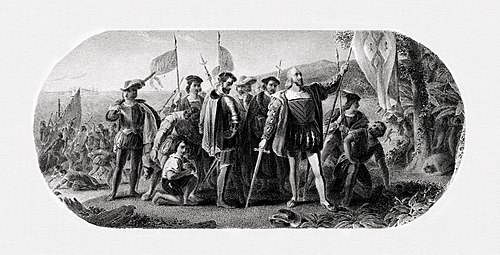
Back Oceloryt Czech Stahlstich German Teräspiirros Finnish Gravure sur acier French Cruachghreanadóireacht Irish Acélmetszet Hungarian Փորագրություն մետաղի վրա Armenian Gravir baja ID Siderografia Italian Stålstikk NB

Steel engraving is a technique for printing illustrations on paper using steel printing plates instead of copper, the harder metal allowing a much longer print run before the image quality deteriorates. It has been rarely used in artistic printmaking, although it was much used for reproductions in the 19th century. Steel "engraving", in fact technically mostly using etching, was introduced in 1792 by Jacob Perkins (1766–1849), an American inventor, for banknote printing. When Perkins moved to London in 1818, the technique was adapted in 1820 by Charles Warren and especially by Charles Heath (1785–1848) for Thomas Campbell's Pleasures of Hope, which contained the first published plates engraved on steel.[1] The new technique only partially replaced the other commercial line engraving techniques of that time such as wood engraving, copper engraving and later lithography.

- ^ Charles Heath, walterscott.lib.ed.ac.uk
© MMXXIII Rich X Search. We shall prevail. All rights reserved. Rich X Search